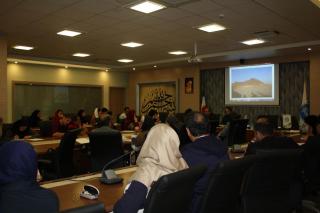
Ritual practices and social evolutions
The case of the funerary rituals of the Zoroastrians
Claudine Gauthier
From the case study of the funerary practices of the Zoroastrians, this conference will aim to draw some more general theoretical and methodological features for the anthropological analysis of the dialectical relationship between ritual and society.
Adopting a diachronic approach, we will intend the Zoroastrian funerary rituals as social facts. We will first enlighten the ambiguous relationship between ancient scriptural sources of the Zoroastrianism and their contemporary social mobilizations, according to socio-historical and geographical backgrounds. Our analysis will be here mostly focused on a comparison of the Iranian and Indian cases.
Further, this study will lead us to answer such questions as: How can ritual changes be mobilized by the actors in order to inscribe them, nonetheless, in accordance with the authority of ancient purity laws? How can the millennia-long symbolic system underlying this funerary practice be actualized and mobilized variously according to social-cultural backgrounds?
مناسک و فرگشت اجتماعی
مطالعه ای در مناسک تشییع و تدفین زرتشتیان
کلودین گوتیه
این سخنرانی بر آن است که از خلال اعمال مرتبط با تشییع و تدفین زرتشتیان به خصایص عام تر نظری و روش شناختی برای تحلیل رابطه دیالکتیکی بین مناسک و جامعه بپردازد.
ما در اینجا مناسک تدفین زرتشتی را با رویکردی در زمانی، همچون واقعیت اجتماعی، مورد توجه قرار خواهیم داید. ابتدا رابطه مبهم بین متون مقدس باستانی زرتشتی و تحرک اجتماعی ایشان در دنیای معاصر را، بر اساس زمینه های اجتماعی-تاریخی و جغرافیایی، روشن خواهیم کرد. تحلیل ما دراین بخش عمدتاً متمرکز بر مقایسه بین زرتشتیان ایران و هندوستان خواهد بود.
به علاوه، این مطالعه به ما کمک می کند که به سؤالاتی از این دست پاسخ دهیم که: کنشگران چگونه می توانند تغییرات منسکی را طوری صورت دهند که همچنان با اقتدار قوانین باستانی پاکی تطبیق داشته باشند؟ چگونه نظام هزاران ساله نمادینی که زیربنای مراسم تدفین است، می تواند در زمینه اجتماعی-فرهنگی متفاوت به طور متفاوتی محقق و اعمال می شود؟